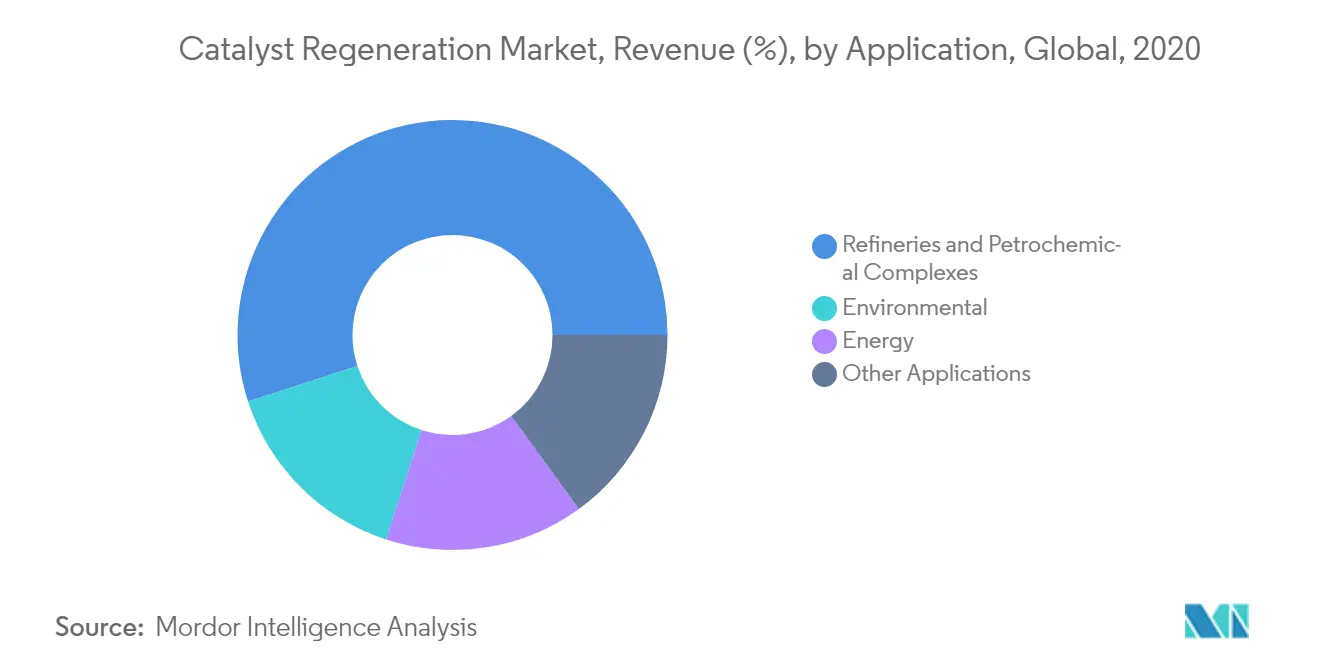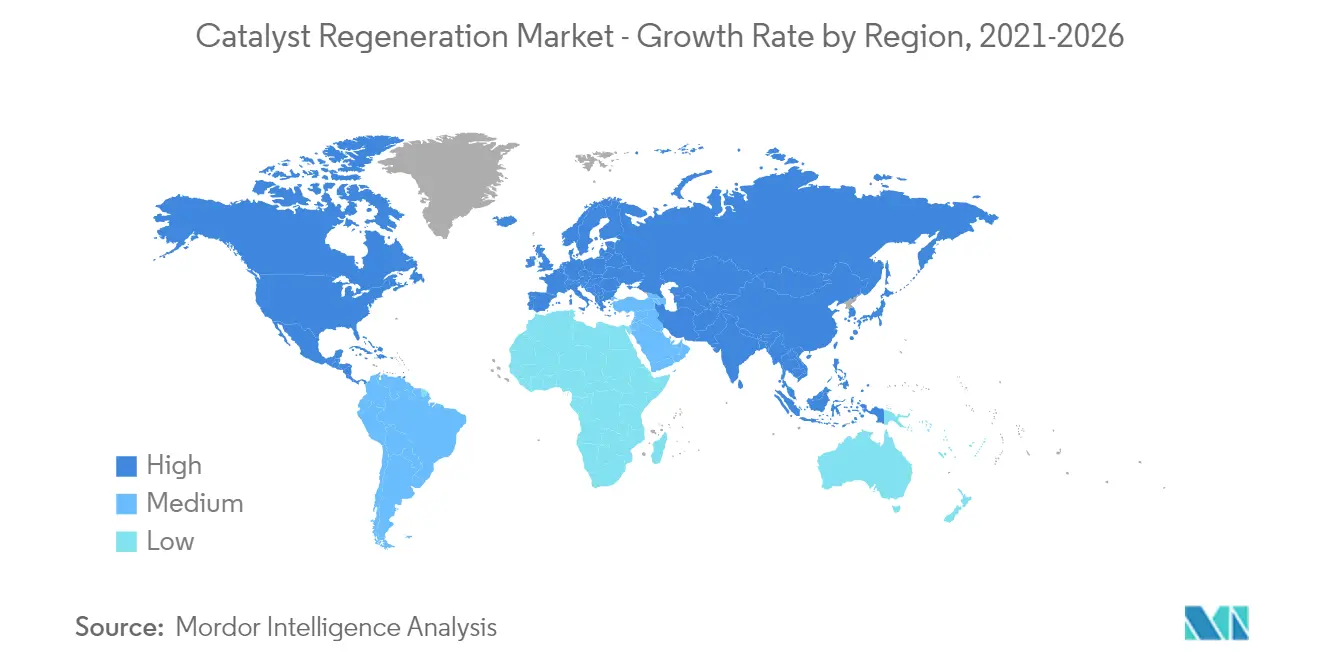Market Trends of Catalyst Regeneration Industry
This section covers the major market trends shaping the Catalyst Regeneration Market according to our research experts:
Refineries and Petrochemical Complexes Segment to Dominate the Market
Catalysts play a major role in petroleum refining since most of the processes beyond the crude unit are catalytic. Several straight-run fuels that are produced through fractional distillation do not meet the standards for low-sulfur and higher-octane fuels. Thus, these crude unit fractions are processed further. An increase in fuel octane number can be achieved through catalytic reforming and isomerization processes, both of which are catalytic in nature.
During the functioning of catalyst, it may be poisoned by any number of contaminants in the feed. Its surface, void spaces, and pores may be fouled by carbon that is produced by cracking and condensation reactions. There are six mechanisms for the deactivation of catalysts used in petroleum refining, including poisoning, fouling, thermal degradation, vapor compound formation, vapor-solid, and solid-solid reactions, and physical damage to the catalyst support. Crude oil contains sulfur and certain metals, such as nickel and vanadium, which act as poisons for many refinery processes, like catalytic reforming. A chemical poison may act in several ways to deactivate the catalyst. The adsorption of these particles on catalyst physically blocks multiple reaction sites. They also prevent or bring down the surface diffusion of adsorbed reactants.
With the ongoing increase in the strict regulations related to the disposal of spent catalysts, and steps to make the overall refining process more economical, the consumption of regenerated catalysts is expected to grow at a healthy rate in the coming years, in refining application

China to Dominate the Asia-Pacific Market
- China is one of the fastest-growing economies, globally. Furthermore, almost all the end-user industries have been witnessing growth, owing to the growing population, living standards, and per capita income.
- The Chinese manufacturing sector is one of the major contributors to the country's economy. The range of Chinese goods includes cement, chemicals, textiles, toys, electronics, ships, rail cars, automobiles, and aircraft, among other products.
- China is a hub for chemical processing, accounting for a major chunk of the chemicals produced globally. The country contributes more than 35% of global chemical sales. The chemical industry is another prominent end-user industry in China. Many major companies in the market have their chemical plants in China. With the growing demand for various chemicals, globally, the demand for precious metal catalysts from this sector is projected to grow during the forecast period.
- Polyolefins, such as polyethylene and polypropylene, are widely used in the production of these products. Thus, China has become a significant location for the manufacturers and exporters of plastic products. Currently, China is a major producer and consumer of polyolefins, worldwide. The demand for polypropylene increased by 4.7% over the recent past.
- However, owing to the COVID-19 pandemic, the market was affected in the early 2020 but recovered towards the end of the year.


